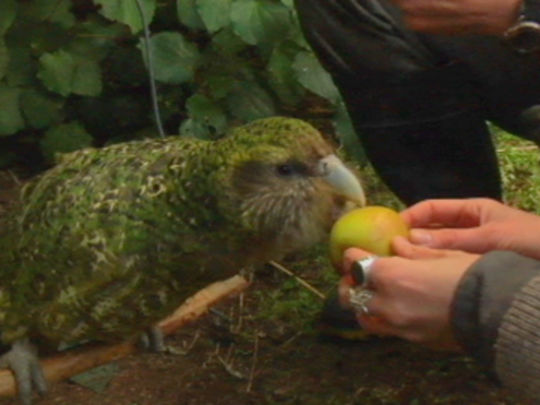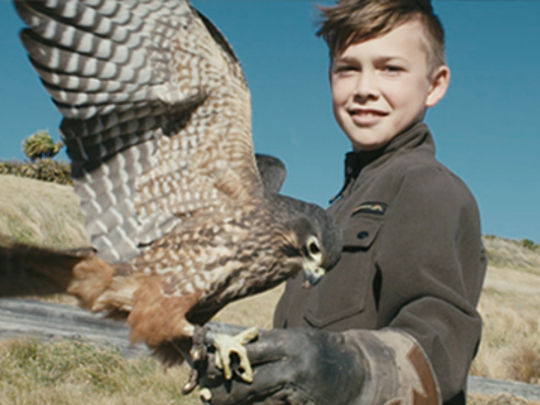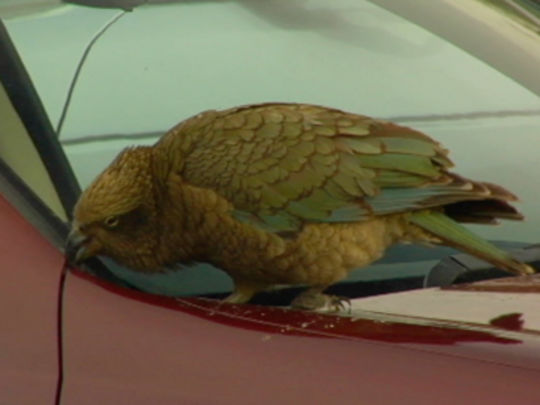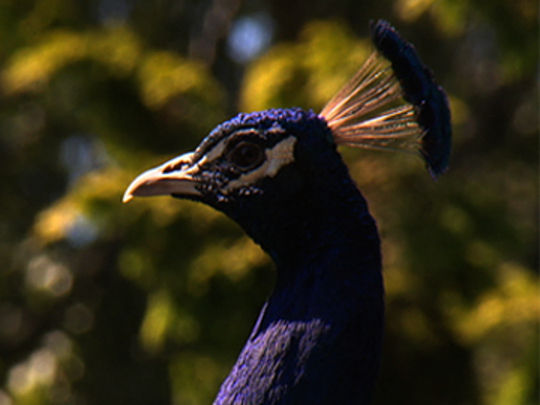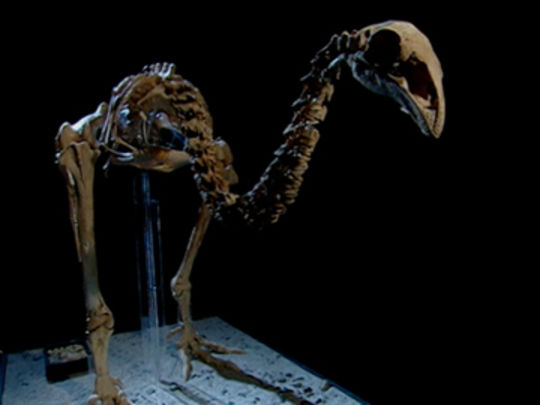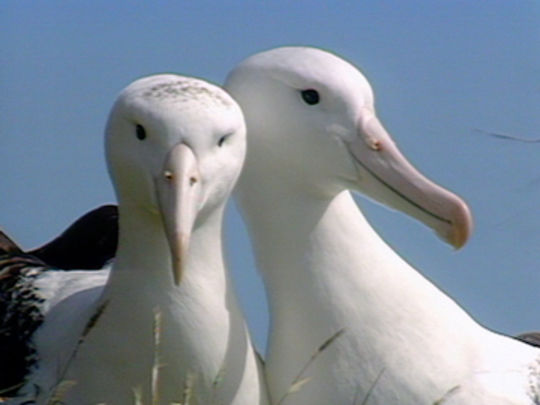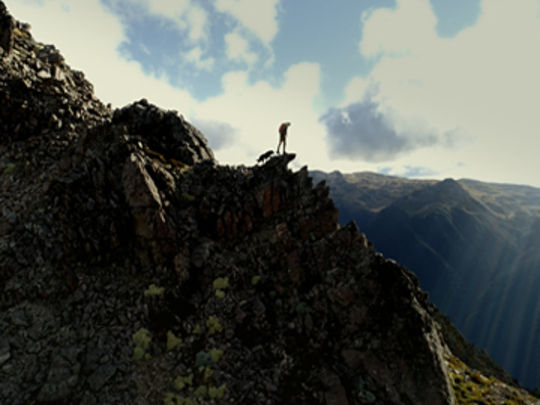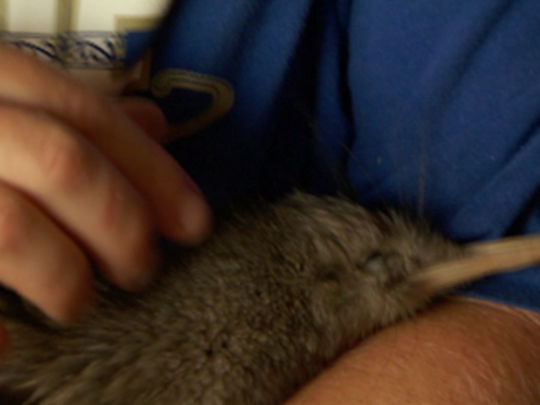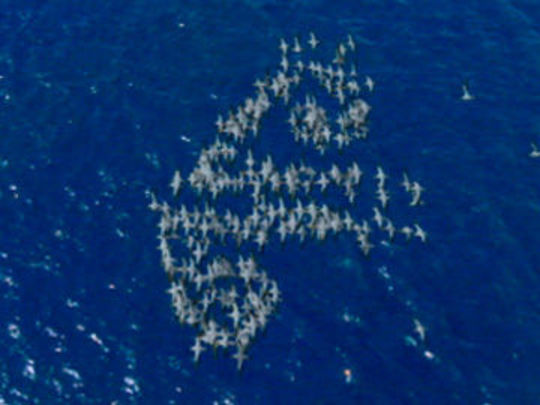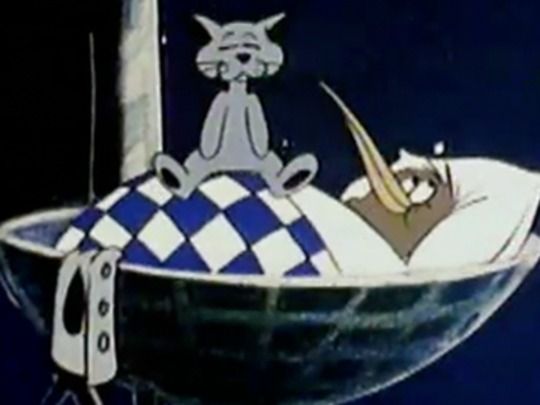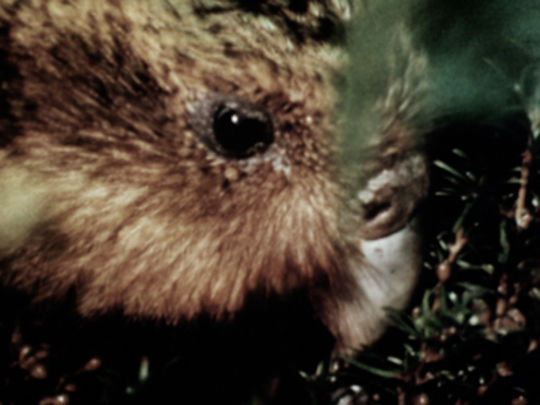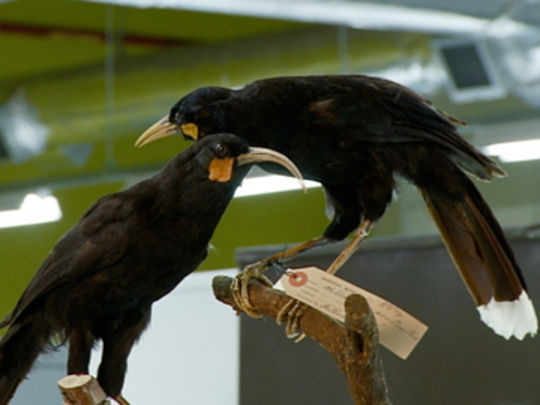The Bird Collection
For the Birds
Us New Zealanders, we love our birds. We even call ourselves kiwis. Some of us drink a beer called Tui — yeah right — and you’ll find birds on all our banknotes. As for Forest & Bird’s annual Bird of the Year competition, it takes our love of things with wings to new heights, with some birds employing campaign managers and receiving celebrity endorsements. There’s even been a voting scandal, which just goes to show what a flap some people get into when it comes to birds.
You could put forward all sorts of reasons as to why we’re so batty about birds. It’s not just binocular-wielding twitchers either, because almost every citizen of Aotearoa can tell a tūī from a takahē, a kiwi from a kākā. Could our obsession have something to do with our need, as a small nation, to punch above our weight? Whether it’s science, sport or the arts, we love to excel, then pat ourselves on the back and say, ‘didn’t we do well, and for such a small country, eh?’
Perhaps that’s why our birds have to be the most unique. The most vulnerable. The most charming. Another thing New Zealanders can get very passionate about is making movies. Yep, we punch above our weight in the screen arts too! You’ll find an abundance of ornithological films in NZ On Screen's Bird Collection. But where do you start, bearing in mind the many hours of footage relating to birds on offer? Without wishing to clip the wings of your curiosity — because you could just work your way through the whole collection — I've collated this carefully curated but by no means exhaustive assortment of highlights.
___________________________________
A significant source of sadness for bird lovers is the extinction of over 50 native species, including the Haast's eagle, huia and South Island kōkako. But you can at least watch In Search of the Moa (2002), a 50-minute documentary about Dinornis giganteus. It features some truly lively interview subjects who help bring the long-extinct bird to life. Two laconic farm contractors, Taylor and Rudi, made a significant discovery of moa bones deep in a South Island cave and they are fabulous talent, while West Coasters Gary and Kevin are convinced moa still roam Fiordland’s impenetrable bush. Paddy Freany’s 1993 photo of a what looks suspiciously like a moa was a revelation to me; now I also suspect small pockets of moa still exist in the wild.
Another doco about an extinct species, Who Killed The Huia? is short and sweet, and exonerates noted naturalist Sir Walter Buller for his presumed part in the extinction of this sacred bird.
Delving deeper into the collection, Land of Birds is the National Film Unit’s first natural history series. A wonderfully endearing collection of 10 documentaries written, directed and largely photographed by Grant Foster, they really do stand the test of time. Three are collected here. The first instalment is Bird of a Single Flight (1973), about the kōtuku, or white heron, the bird that graces our two dollar coin.
Hosted by the genial and knowledgeable Dr Robert Falla — think David Attenborough downunder, but with a ‘60s/‘70s vibe — this award-winning series takes viewers to the kōtuku’s ancestral nesting place at Ōkārito. Featuring sweeping helicopter shots of snowy West Coast alps and what sounds like the entire NZ Symphony Orchestra at play, it’s atmospheric and moving. The film’s conservation message is ahead of its time, and it also manages to be culturally and spiritually sensitive. I spent my 50th birthday kayaking up Ōkārito Lagoon in search of the elusive kōtuku, but I failed to see any; so for me this felt like a belated birthday gift.
Two other films from this series are multi-award winner Royal Albatross (1980) and The Big Gull - Karoro (1978). Both are similarly thought-provoking, heartfelt and ecologically forward-thinking. The karoro is arguably the less glamorous and more ubiquitous bird. But this is a fascinating examination, not just of the bird, but how humans have interfered with its health and habitat.
It's no surprise that the star of our one dollar coin gets its fair share of air time, in spite of its inability to fly. One of the many kiwi films that stands out is Kiwi - A Natural History. Made in 1991 by Michael Hacking, it employed innovative camera techniques that allowed viewers to get up close and personal with these elusive birds. Hacking and cameraman Swami Hansa did camera tests using a military night scope, but it proved too noisy and bulky for the field; and it needed a power socket. Handily, the military then released some fancy image-intensifying equipment for civilian use, and the team were permitted to use their advanced technology. The crew spent long nights filming wild kiwi and captive birds. The result won a bunch of impressive awards.
Another must-see kiwi documentary is Who's Killing the Kiwi (1997). Be warned, it’s a bit of a slasher pic: there's no holding back on accounts and images of the carnage wrought by mammalian predators. Spoiler alert: as to who’s killing the kiwi, it's largely dogs, cats, stoats and possums. The message of the conservation workers is very clear: predator control, and that includes domestic animals, must be prioritised.
One last kiwi clip, New Zealand Mirror No. 1 (1950) is a total time machine. The kiwi in this newsreel are described as "queer birds. They cannot fly for they have only stumps instead of wings", and the astonished narrator exclaims “to cap all, the female lays an enormous egg for her size, then she refuses to hatch it and lets father do the work!” Clearly the NFU hadn’t yet heard of women’s lib.
Now to the kea. The world’s only alpine parrot might not be on a coin or a banknote — and in a total miscarriage of justice, it was cut from the third series of the ten dollar note — but it is a national icon and a winner with tourists, thanks to its cheeky antics in South Island tourist locales. The kea stars in a clutch of titles including Kea - Mountain Parrot (1993), which won three awards at the International Festival of Ornithological Films in France. Directed by Rod Morris, it was researched by Alison Ballance, a celebrated name in the field of wildlife storytelling.
The courtship sequences are especially endearing, although a warning to easily outraged parents: the film races from G to R18 as the narrator intones, "for as much as ten minutes the couple prolong their mating, unusual in the world of birds, a seldom seen display, a culmination of their gentle and devoted courtship". The birds’ privacy is completely invaded, although they don’t seem to care too much as they go at it hammer and tongs, their rhythmic squawks reminiscent of an old wire-wove bed being put through its paces.
Another groovy kea doco is The Prince of Nosey-Parkers (1972). It features all sorts of treats, including a fabulously space age electronica soundtrack by Ian McDonald. There’s also poetry, comedy schtick, and some dated but adorable talent including mountaineer/author John Pascoe, whose passion for the kea is infectious. For something more current, try this 2017 Loading Doc, Ajax the Kea Conservation Dog. Amiable Ajax and his human handler Corey Mosen provide a sobering reminder that today, in spite of people loving kea, there are fewer of them in the wild than kiwi. No wonder Corey makes a plea for protection.
Old-fashioned yet compelling, Landscape documentary Muttonbirders (1969) opens a window into Rakiura/ Stewart Island's muttonbirders. Jaunty credit music fades to black and white footage of swaying kelp. At a dull yet strangely intriguing town meeting, hunting permits are allocated. Then the families head to the windswept Tītī Islands, as they reminisce about living in caves and "properly going bush". Their recollections of a dynamic but harsh life are a goldmine for those of us who hanker to live closer to nature. It’s definitely not a conservation piece: squeaking birds are caught for the pot, then mums and small children gaily pluck and clean the birds, and dip them in boiling wax. Such hardy resourceful people; time for an updated version.
One thing you’ll note while perusing these bird films: they’re almost exclusively narrated by men. This sort of imbalance can stick in the craw of a female voice artist. But at least Loading Doc Kārearea (2018) has a female narrator. What’s more, the bird does the talking — although shhhh, it’s actually a human pretending to be a bird. And Kimiora Kaire-Melbourne is absolutely excellent as Fern, the lively spokesbird for the kārearea (NZ native falcon). This quirky short piece is delightful, and understandably a hit with viewers of all ages.
As to where to end this love letter to NZ On Screen’s Bird Collection, there is absolutely no contest: it has to be the universally beloved Goodnight Kiwi.
- Elisabeth Easther is a journalist, playwright (Seed), actor (Shortland Street), TV presenter (Islands of the Gulf) and bird lover. In 2017 she edited the book Bird Words - New Zealand Writers on Birds.
